Fostex
Speaker Components

Speaker Overview
- Types of drivers
- Interpretation of Catalog Specification
- Enclosures
- Enclosure Materials
- Assembly of Enclosures
Enclosures
Drivers produce sound by their diaphragms moving back and forth to create compressional waves. The sound radiated from the front and back of diaphragms is identical except that their phases are opposite. What will happen if drivers are driven unbaffled, or mounted to nothing? As illustrated, sounds radiated from the front and back of diaphragms cancel out each other, silencing bass sound. The purpose of a baffle is to isolate the front sound from the back sound, which allows for bass sound to be audible. There are many types of enclosures available where a variety of baffles are incorporated. Next, we will discuss representative enclosures.
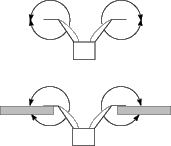
Flat Baffle Type
A baffle is the only means to isolate the front sound from the back sounds. Drivers are mounted on baffles of a certain size. The larger the baffle, the more advantageous is reproduction of bass sound because the back sound must go a longer roundabout distance before it can get to the front of the enclosure. In applications of this method, drivers must be located off center of the baffle. Some disadvantages that bass reproduction capability is not as good as other enclosure systems, which is inevitable with flat baffles, may be justified by the ease in building enclosures, and sound with openness. This type of enclosure should be located rather distant from and not parallel to the walls. This is to avoid disturbance of back sound by the walls.



Open-Back Type
An open-back type enclosure can be attained if the edges of the flat type baffles are bent. The idea is to make flat enclosures smaller to overcome the necessity of a larger size baffle for richer bass sound. Note must be taken, however, that backward bends sometimes function as a thick pipe. Pipes present at the back of drivers will be a source of pipe size dependent resonance. This fact suggests the possibility of appearance of strong peaks in reproduced sound if enclosures are excessively deep. It therefore is recommended the depth of back opening be at a reasonable extent.
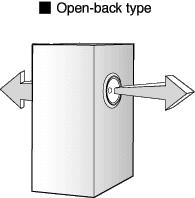

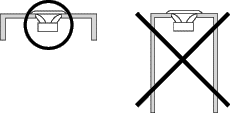
Sealed Type
Enclosures of this type have the back of the baffles completely housed in a box of an appropriate size to prevent sounds from being radiated from the back of drivers, confining the back sound within the box. Thus, only sound radiated from the frontal side of drivers will reach the listeners.The advantage of sealed type enclosures is peculiarity-free bass sounds and good transient characteristics of bass sound. One factor in building successfulsealed type enclosures is careful bonding using adhesive to ensure satisfactory sealing.
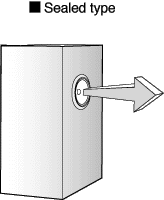

Phase-Inverting (Bass Reflex Type)
A phase-inverting type enclosure is called a bass-reflex type enclosure. This type of enclosure, as well as the sealed type, is one of the standard enclosure systems. Confining the sound exiting from the back of a baffle within an enclosure is the theory of the sealed enclosure system. With phase inverting enclosures, a port (duct) is provided to enhance bass sound of a selected frequency range. This can be carried out by making back sound present only within the enclosure of a selected range of frequencies resonated and inverted, and by adding such processed sound to the sound originally present at the frontal side of the baffle through the port. With phase inverting enclosures, over sealed enclosures, reproduction of an extended bass frequency range can be expected if the enclosure volume is the same.
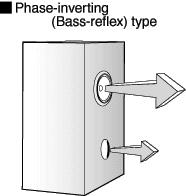
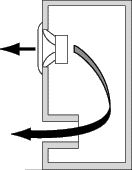
Double Bass-Reflex Type
The double bass-reflex system is intended for further enhancement of bass sound, and can be achieved if an additional bass-reflex process is given to bass-reflex system enclosures. Calculation of parameters of double bass-reflex system enclosures, which function in a very complex mode, often requires experience, intuition and the sixth sense. It is, therefore, strongly recommended as many and various calculationexamples as practical be reviewed and knowledge be built up before designing your own version.
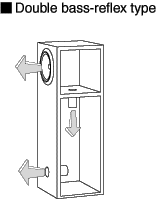
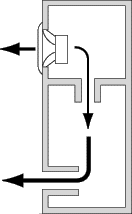
Back-Loaded Horn Type
Being one of the systems where sound radiated from the back of drivers is utilized to enhance bass, including bass-reflex and double bass-reflex types, back loaded horn type enclosures make the most efficient use of such back sound. Back-loaded horn system enclosures work in such a manner that, as bass comes out of a horn mounted on the back of a driver, the rest of sound spectrum, e.g. mid- and high-frequency ranges, is radiated directly from the driver. Enclosures of this system are highly efficient by actively utilizing sound output from drivers, and respond well to the subtlest componentsof music signals.

















